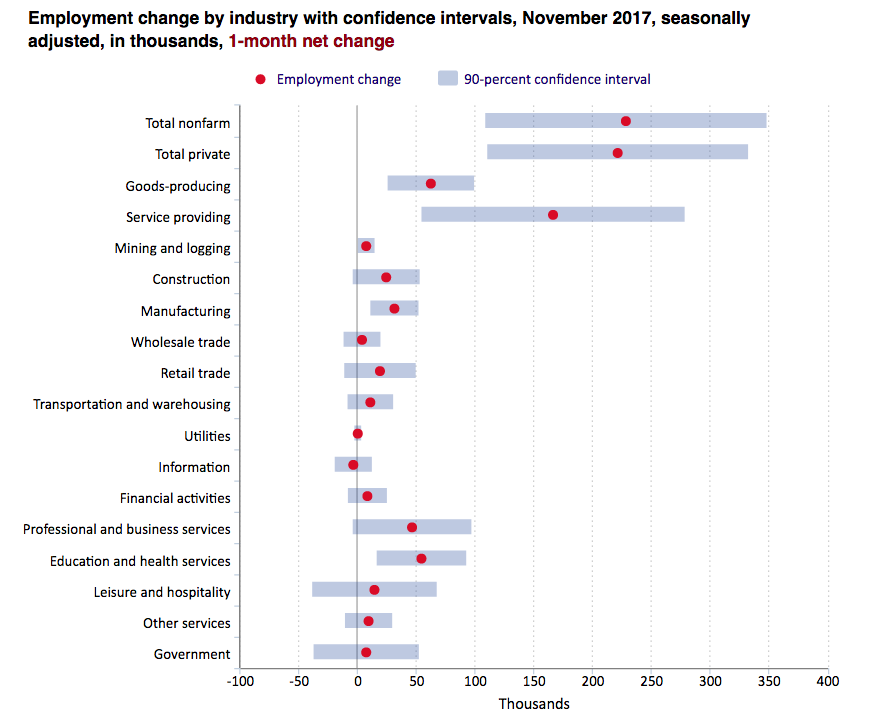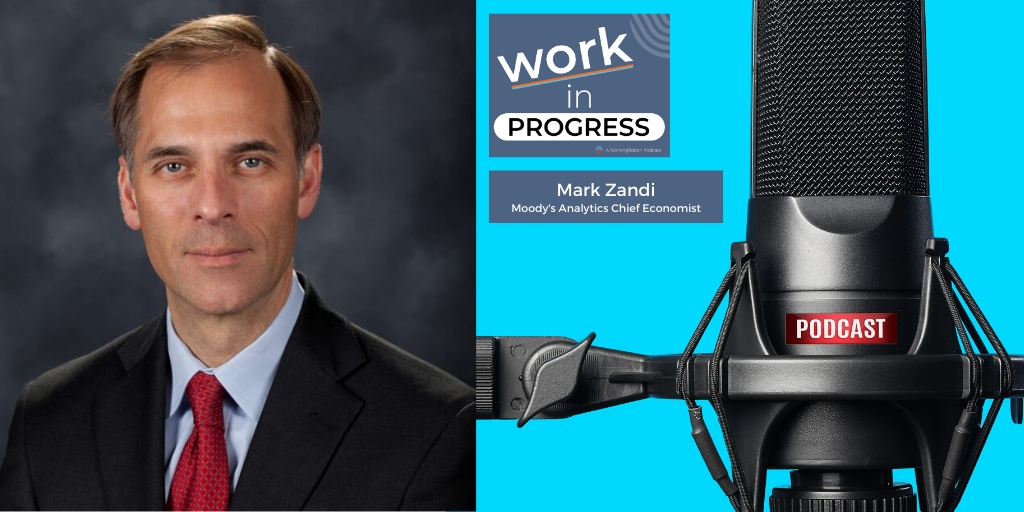For the past few months, it’s been hard to get an accurate read on the U.S. job market.
This fall, the unemployment numbers were distorted by the impact of the Hurricanes Harvey and Irma that struck in August and September. The latest jobs report from the U.S. Bureau of Labor Statistics is out and that static is gone.
Here are the headlines for November: 228,000 jobs were created over the month; the unemployment rate remained steady at 4.1 percent and the average hourly earnings rose by a moderate five-cents to $26.55.
The topline number—jobs added—beat expectations and was led by solid gains in manufacturing. 31,000 new workers were added to the payroll, with 8,000 of those jobs going to machinists and 4,000 to makers of computer and electronic products.

“Manufacturing is strong, powered by a solid global economy and a softer U.S. dollar, healthy vehicle and housing industries and a booming tech sector,” according to Mark Zandi, Chief Economist for Moody’s Analytics in Philadelphia.
Economist Diane Swonk, Founder and CEO of DS Economics in Chicago, agrees that manufacturing is getting a boost from worldwide demand.
“Domestic demand is picking up, along with exports. This is the broadest, synchronous global economic growth we have seen since before the financial crisis,” Swonk says.
This year, manufacturing employment increased by 189,000. There are 12.5 million people working in manufacturing in the U.S., a million more than the post-recession low in early 2010.
RELATED STORY: C-Suite Solutions: Snap-on CEO Pinchuk on reviving career and technical education
Other sectors continue to show steady gains. The professional and business services sectors added 46,000 jobs over the month, health care added 30,000 and specialty trade contractors added 23,000 jobs. Other major sectors: retail, hospitality and wholesale trade changed little over the month.
As we approach the New Year, let’s take a look at where the U.S. job market stands: The November gains marked the 86th straight month—more than seven years—that businesses added workers.
With one more jobs report to close out the year coming in January, the economy is on track to add nearly two million jobs in 2017. Since the recovery began in 2010, employers have added 16 million workers to their payrolls. Separately, the unemployment rate continues to remain at a 17-year low of 4.1 percent.
Despite the strong gains, employers continue to say that they’re having a hard time finding the skilled workers they need to fill hundreds of thousands of jobs. As economists say we are near or at full employment, there is significant competition over a shrinking workforce.
The number on the labor participation rate in November was unchanged, showing that employers are struggling to bring workers onboard. Over the past 20 years, the rate has dropped from 67 percent to 62.7 percent as many prime-age workers hit hard by the recession have given up and remain on the sidelines.
RELATED STORY: October jobs report: ‘Significant’ decline in the labor participation obscures drop in unemployment rate
Analysts say that half of the decline is due to Baby Boomers retiring. As that aging generation leaves the workforce, they often take their knowledge with them. This makes it even more difficult for employers looking to fill jobs with skilled workers. As the economy expands and workers remain hard to find, employers could opt to raise wages to attract new workers, but this could drive up consumer prices.
“There is a mounting threat that the job market will overheat next year. Overheating means that the job market is so tight that it ignites significant wage and price pressures, ultimately forcing the Federal Reserve to aggressively raise interest rates,“ Zandi says.
Yet employers are still holding off on raising wages. They remain lower than expected, up just 2.5 percent from a year ago.
“The shift to more professional and manufacturing hires did not deliver on the wage front. The professional hires were in lower-wage areas,” according to Swonk. “It is also worth noting that many manufacturing jobs outside of the vehicles sector are now minimum wage.”
My analysis of nonfarm payrolls for November. https://t.co/pkUeDJFuRu
Stagnant wage rates are a disappointment, as I told @carlquintanilla on @cnbc @squawkstreet with @davidfaber and @MelissaLeeCNBC— Diane Swonk (@DianeSwonk) December 8, 2017
Join the Conversation: Tell us your thoughts on the latest jobs report on our Facebook page.











